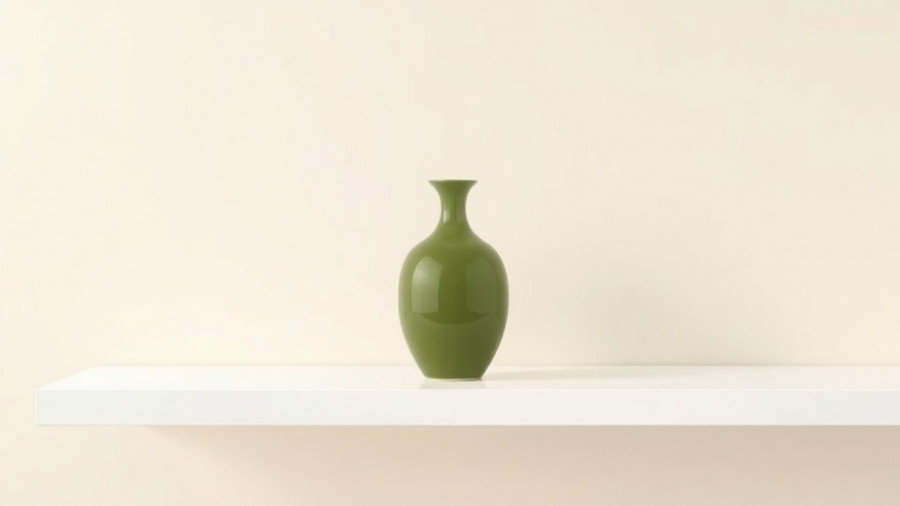
Discover the Allure of Olive Green This Autumn
As the leaves begin to change and the air shifts to that invigorating chill, one color emerges repeatedly in homes and on runways alike: olive green. This versatile hue offers not just a touch of earthy charm but also a remarkable flexibility as a neutral. Its vibes span from cozy and vintage to fresh and chic, making it a go-to choice for autumn design trends.
Olive Green: A Versatile Design Choice
Many homeowners might resist stepping away from traditional colors, but olive green provides an invitation to experiment without making a bold statement. In fact, it acts as a bridge color—easily pairing with everything from crisp whites to warm wood tones. As noted in recent trends, olive green furniture not only offers a fresh breath in interiors but also aligns seamlessly with the trending earthy palettes of browns and warm gray tones. This emergence as a trending shade underscores its increasing demand and appreciation across various design spectrums.
Unique Ways to Incorporate Olive Green into Your Space
Finding ways to introduce olive green can be effortlessly stylish and practical. From an olive velvet sofa to patterned cushions, the options are limitless. Not every homeowner is ready to commit to a full olive green wall or kitchen cabinetry. Therefore, consider subtle touches like cushion covers or decorative vases. These smaller elements allow you to play with the hue while enhancing the aesthetic of your space.
The Emotional Connection of Nature-Inspired Colors
Colors significantly impact our emotional well-being, and olive green, reminiscent of nature, fosters a sense of tranquility and balance. In increasingly busy lives, this color offers a serene backdrop, echoing the peacefulness of an autumn forest. Women’s interest in biophilic design trends—integrating nature into interiors—demonstrates why olive green feels like such a natural choice right now.
Future Predictions: Color Trends for 2025 and Beyond
Looking towards 2025, the trend of earthy tones—particularly olive and other greens—shows signs of steady growth. Experts predict that these versatile hues will dominate beyond seasonal trends. This is not just a fad; olive green's relationship with modern aesthetics ensures it will remain a timeless classic in the realm of color.
Transformative Benefits of Olive Green Décor
One of the most significant benefits of incorporating olive green is its ability to create inviting spaces. Whether it’s a soft olive couch or a vibrant accent pillow, each piece adds depth and warmth to a room. The rich undertones of this color instill a cozy vibe, making your home feel welcoming, regardless of the season.
Local versus Global Perspectives on Olive Green
While olive green resonates deeply in Western design, its appeal is universal. International trends show varying usages of olive green, reflecting cultural contexts. For instance, in many Mediterranean countries, olive trees symbolize peace and resilience. As such, utilizing olive green in décor could evoke sentiments beyond mere aesthetics, connecting us to deeper roots of heritage and lifestyle.
Seek Inspiration and Dive into Olive Green
As the season embraces change, consider how olive green can refresh and revitalize your home. Look to design catalogs, join local workshops, or consult with a design professional to explore how this “it” color can elevate your space. Are you ready to take the plunge into this serene hue?
Stay informed and connected about the latest home design trends to inspire your next project. Olive green is awaiting your embrace, and it’s time to see how it can transform your living spaces.
 Add Row
Add Row  Add
Add 




Write A Comment